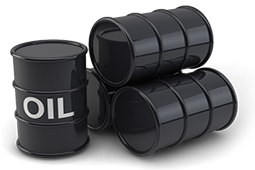
Oil Traders Have Bigger Worries Than Tanker War in Hormuz Strait

Instead, oil prices have barely budged. Traders are not buying into the theory that Iran wants a war, but they are worried about demand.
Dated Brent assessed by S&P Global Platts – the world’s most important oil benchmark – spiked by over 4% following the attacks on June 13 and traded briefly just above $62 per barrel.
On the face of it, this modest rise does not reflect the risk to almost a fifth of the world’s oil shipped through the Strait of Hormuz, a narrow channel separating Iran from the Arabian Peninsula.
“I see the limited reaction in the crude oil market as an indication of traders saying ‘hang on a minute’,” said Ole Hansen, head of commodity strategy at Saxo Bank.
“If Iran did this it would be an open invitation to the US to step up its involvement and that should have sent the price much higher.”
Supporting Hansen’s point, crude futures tumbled earlier in the week, with Brent falling below $60 per barrel for the first time since late January, after data showed a larger-than-expected increase in US oil inventories.
The combination of rising stockpiles, tepid demand growth and fears of a slowing global economy has been enough to wipe $13 off the value of a barrel of Brent crude since May, despite the recent attacks on oil shipping and infrastructure in the Middle East.
Iran has already been blamed for orchestrating clandestine attacks last month on tankers moored off the coast of Fujairah in the UAE. Tehran denies responsibility despite Iranian officials threatening to close down Hormuz, in response to US sanctions preventing Iran from exporting oil.



Trump weighs using $2 billion in CHIPS Act funding for critical minerals

Codelco cuts 2025 copper forecast after El Teniente mine collapse

Electra converts debt, launches $30M raise to jumpstart stalled cobalt refinery

Barrick’s Reko Diq in line for $410M ADB backing

Abcourt readies Sleeping Giant mill to pour first gold since 2014

Nevada army depot to serve as base for first US strategic minerals stockpile

SQM boosts lithium supply plans as prices flick higher

Viridis unveils 200Mt initial reserve for Brazil rare earth project

Tailings could meet much of US critical mineral demand – study

Kyrgyzstan kicks off underground gold mining at Kumtor

Kyrgyzstan kicks off underground gold mining at Kumtor

KoBold Metals granted lithium exploration rights in Congo

Freeport Indonesia to wrap up Gresik plant repairs by early September

Energy Fuels soars on Vulcan Elements partnership

Northern Dynasty sticks to proposal in battle to lift Pebble mine veto

Giustra-backed mining firm teams up with informal miners in Colombia

Critical Metals signs agreement to supply rare earth to US government-funded facility

China extends rare earth controls to imported material

Galan Lithium proceeds with $13M financing for Argentina project

Kyrgyzstan kicks off underground gold mining at Kumtor

Freeport Indonesia to wrap up Gresik plant repairs by early September

Energy Fuels soars on Vulcan Elements partnership

Northern Dynasty sticks to proposal in battle to lift Pebble mine veto

Giustra-backed mining firm teams up with informal miners in Colombia

Critical Metals signs agreement to supply rare earth to US government-funded facility

China extends rare earth controls to imported material

Galan Lithium proceeds with $13M financing for Argentina project

Silver price touches $39 as market weighs rate cut outlook

















